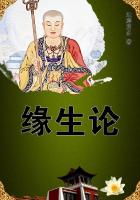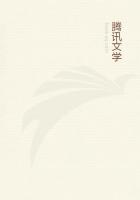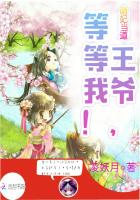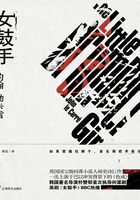This is perhaps a fitting time to give some personal description of Miss Bronte. In 1831, she was a quiet, thoughtful girl, of nearly fifteen years of age, very small in figure--"stunted" was the word she applied to herself,--but as her limbs and head were in just proportion to the slight, fragile body, no word in ever so slight a degree suggestive of deformity could properly be applied to her; with soft, thick, brown hair, and peculiar eyes, of which I find it difficult to give a description, as they appeared to me in her later life. They were large and well shaped; their colour a reddish brown; but if the iris was closely examined, it appeared to be composed of a great variety of tints. The usual expression was of quiet, listening intelligence; but now and then, on some just occasion for vivid interest or wholesome indignation, a light would shine out, as if some spiritual lamp had been kindled, which glowed behind those expressive orbs. I never saw the like in any other human creature. As for the rest of her features, they were plain, large, and ill set; but, unless you began to catalogue them, you were hardly aware of the fact, for the eyes and power of the countenance over-balanced every physical defect; the crooked mouth and the large nose were forgotten, and the whole face arrested the attention, and presently attracted all those whom she herself would have cared to attract. Her hands and feet were the smallest I ever saw; when one of the former was placed in mine, it was like the soft touch of a bird in the middle of my palm. The delicate long fingers had a peculiar fineness of sensation, which was one reason why all her handiwork, of whatever kind--writing, sewing, knitting--was so clear in its minuteness. She was remarkably neat in her whole personal attire; but she was dainty as to the fit of her shoes and gloves.
I can well imagine that the grave serious composure, which, when Iknew her, gave her face the dignity of an old Venetian portrait, was no acquisition of later years, but dated from that early age when she found herself in the position of an elder sister to motherless children. But in a girl only just entered on her teens, such an expression would be called (to use a country phrase) "old-fashioned;" and in 1831, the period of which I now write, we must think of her as a little, set, antiquated girl, very quiet in manners, and very quaint in dress; for besides the influence exerted by her father's ideas concerning the simplicity of attire befitting the wife and daughters of a country clergyman, her aunt, on whom the duty of dressing her nieces principally devolved, had never been in society since she left Penzance, eight or nine years before, and the Penzance fashions of that day were still dear to her heart.
In January, 1831, Charlotte was sent to school again. This time she went as a pupil to Miss W-, who lived at Roe Head, a cheerful roomy country house, standing a little apart in a field, on the right of the road from Leeds to Huddersfield. Three tiers of old-fashioned semicircular bow windows run from basement to roof; and look down upon a long green slope of pasture-land, ending in the pleasant woods of Kirklees, Sir George Armitage's park. Although Roe Head and Haworth are not twenty miles apart, the aspect of the country is as totally dissimilar as if they enjoyed a different climate. The soft curving and heaving landscape round the former gives a stranger the idea of cheerful airiness on the heights, and of sunny warmth in the broad green valleys below. It is just such a neighbourhood as the monks loved, and traces of the old Plantagenet times are to be met with everywhere, side by side with the manufacturing interests of the West Riding of to-day. There is the park of Kirklees, full of sunny glades, speckled with black shadows of immemorial yew-trees; the grey pile of building, formerly a "House of professed Ladies;" the mouldering stone in the depth of the wood, under which Robin Hood is said to lie;close outside the park, an old stone-gabled house, now a roadside inn, but which bears the name of the "Three Nuns," and has a pictured sign to correspond. And this quaint old inn is frequented by fustian-dressed mill-hands from the neighbouring worsted factories, which strew the high road from Leeds to Huddersfield, and form the centres round which future villages gather. Such are the contrasts of modes of living, and of times and seasons, brought before the traveller on the great roads that traverse the West Riding. In no other part of England, I fancy, are the centuries brought into such close, strange contact as in the district in which Roe Head is situated. Within six miles of Miss W-'s house--on the left of the road, coming from Leeds--lie the remains of Howley Hall, now the property of Lord Cardigan, but formerly belonging to a branch of the Saviles. Near to it is Lady Anne's well; "Lady Anne," according to tradition, having been worried and eaten by wolves as she sat at the well, to which the indigo-dyed factory people from Birstall and Batley woollen mills would formerly repair on Palm Sunday, when the waters possess remarkable medicinal efficacy; and it is still believed by some that they assume a strange variety of colours at six o'clock on the morning of that day.
All round the lands held by the farmer who lives in the remains of Howley Hall are stone houses of to-day, occupied by the people who are ****** their living and their fortunes by the woollen mills that encroach upon and shoulder out the proprietors of the ancient halls. These are to be seen in every direction, picturesque, many-gabled, with heavy stone carvings of coats of arms for heraldic ornament; belonging to decayed families, from whose ancestral lands field after field has been shorn away, by the urgency of rich manufacturers pressing hard upon necessity.


